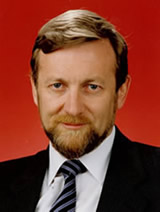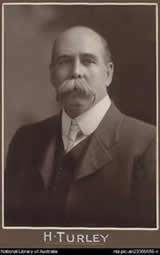201 Adjournment of debate
-
A debate may be adjourned on motion or by the granting of leave for a senator to continue the senator’s speech, either to a later hour of the same day or to any other day.
-
A motion to adjourn a debate is not open to debate or amendment.
-
When a debate is adjourned, by motion or by the granting of leave for a senator to continue the senator’s speech, the resumption of the debate shall be made an order of the day for the next day of sitting without any question being put, unless a motion is agreed to fixing another time for the resumption of the debate.
-
The senator on whose motion a debate is adjourned shall be entitled to be first heard on the resumption of the debate.
-
If a motion for the adjournment of the debate on a question is negatived, the senator moving the motion may address the Senate at any time during the debate.
-
A motion for the adjournment of a debate may not be moved by a senator, other than a minister, who has spoken in the debate or who has previously moved the adjournment.
Amendment history
Adopted: 19 August 1903 as SOs 424 (corresponding to paragraph (1)) and SOs 425 and 426 (corresponding to paragraphs (4) and (5)), but renumbered as SOs 419 to 421 for the first printed edition
Amended:
- 26 November 1981, J.716–17 (deletion of references to seconding from paragraph (5))
- [13 May 1987, J.1849–50 (sessional order making resumption of a debate automatically an order of the day for the next sitting day, unless another time was fixed by motion); re-adopted 15 September 1987, J.36–43]
1989 revision: Old SOs 434–36 combined, structured as three paragraphs and renumbered as SO 201, paragraphs (1), (4) and (5); 1987 sessional order incorporated as paragraph (3) and consequential amendments made to paragraph (1); paragraph (2) inserted to preserve content from old SO 431 that had not transferred to SO 199; paragraph (6) added to make explicit a procedural rule implicit in rulings of the President; expression streamlined and language modernised
Commentary

Senator Gareth Evans (ALP, Vic), when Manager of Government Business, supported the streamlining of procedures for adjourning debates (Source: Commonwealth Parliamentary Handbook)
Like SO 199 in relation to the closure, SO 201 was transformed by the 1989 revision to provide a complete code of practice for the adjournment of debates.
The most significant changes derived from a new sessional order adopted in 1987 which became the basis for paragraph (3). Before the adoption of the sessional order it was necessary, on every occasion when a debate was adjourned, to move a second motion to provide for the resumption of the debate. In most cases, the second motion provided for the resumption of the debate on the next day of sitting. The sessional order made this automatic. A motion would be required only if some other time (such as a later hour of the day or a specified day in the future) were to be fixed. In introducing the proposal to the Senate when giving notice of the motion, the then Manager of Government Business, Senator Gareth Evans (ALP, Vic), explained that the purpose of the order was to streamline proceedings and avoid unnecessary motions without detracting from the rights of senators. The proposal had been discussed by the Standing Orders Committee (in the context of a broader examination of changes required to modernise the standing orders) but had not formally been reported on.[1]
The new sessional order referred to an alternative method for adjourning a debate apart from a motion; namely, a request that a senator be granted leave to continue his or her remarks.[2] Either method resulted in the adjournment of the debate and its automatic resumption on the next day of sitting without any question being put, in the absence of a motion fixing another time. When the revised draft of the new standing orders was tabled in 1989, paragraph (1) included both methods of adjourning a debate as well as the options for timing of the resumption.

Senator Henry Turley (ALP, Qld), President of the Senate 1910-13, made important rulings on the right to adjourn debates, incoroprated into the 1989 revision of the standing orders (Source: National Library of Australia)
Another addition was the current paragraph (2) which had originally been part of a precursor order relating to the closure (see SO 199). The new paragraph specified that a motion to adjourn a debate could neither be debated nor amended. This is in contrast to a motion fixing the time for resumption of the debate which is open both to debate and amendment.
A third addition was the final paragraph which, like the equivalent provision in SO 199, was based on rulings of the President and gave expression to the principle that a senator may speak only once in a debate and is therefore not entitled to the call a second time to move the adjournment, or to move the adjournment more than once.[3] These restrictions do not apply to a minister, however, because a minister, as well as having a right to speak in a debate, has a right under SO 56 to move a motion connected with the conduct of the business of the Senate at any time without notice.[4]